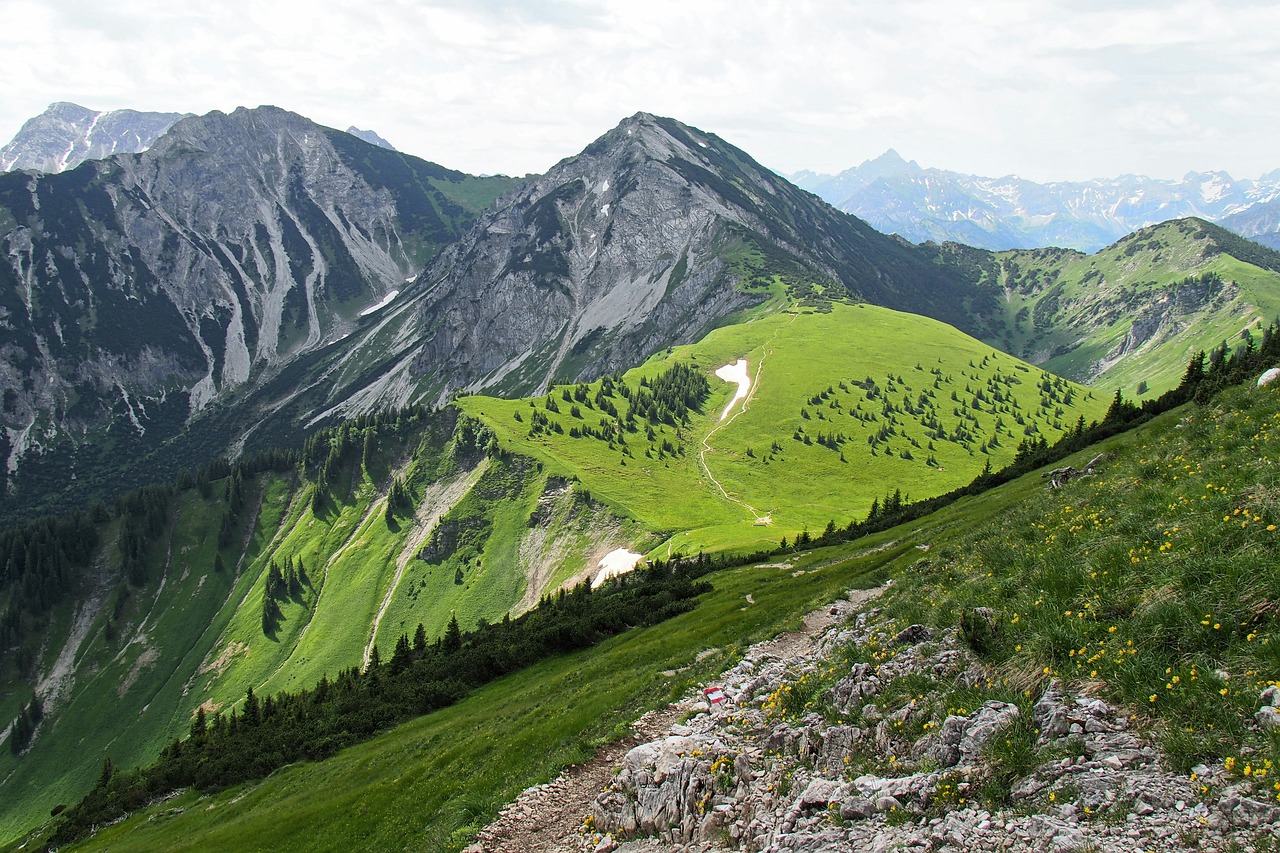Central Europe is among the fastest warming locations on Earth. In the Alps, this has ramifications for nature, outdoorspeople, and tourist infrastructure. Paul Hockenos reports.
Sitting at one of the picnic tables outside Solsteinhaus, a hiker’s hostel high in the Tirolian Alps near Innsbruck, Robert Frankhauser, its proprietor, looks out over the Stubaier mountain chain. “There haven’t been year-around glaciers there for 15 to 20 years,” says Frankhauser, a native of the region. “And recently, the months that most of the snow disappears come ever earlier and end ever later.”
Europe’s Alps are being hit hard by global warming, temperatures rising over 2 degrees Celsius, twice that of temperatures worldwide. The manifold changes that the climate crisis has wrought on Frankhauser’s corner of the Alps and his establishment reflect those across Europe’s greatest mountain range, which stretches from Monaco to Vienna. In the last century, glaciers in the Alps have lost between 30 and 40 percent of their surface area and half of their volume, a further 10 to 20 percent of their bulk disappearing since 1980, according to the Research Center for Alpine Ecosystems (CREA) in Chamonix, France.
The novel conditions and weather patterns have changed much in the Alps – and for the sporty types visiting them. About 120 million people visit the Alps each year to ski, snowboard, hike, rock climb, paraglide, and cycle. The crowds are growing ever larger as Germans and other Europeans look for vacation spots closer to home – and cooler than their native cities. The longer summers may devastate the glaciers and permafrost, but the hiking season – and the first visits to Solsteinhaus and its sister hostels – also begin earlier.
“Climate change has long been an unmistakable fact for the Austrian Alpine Club,” says Peter Kapelari on the organisation’s website. “What we observe in the mountain nature proves and underlines the figures that the long-term observations of the Central Institute for Meteorology and Geodynamics and various university studies also show us. Every year the glacier measuring service of the Alpine club reports ever greater drops in size.”
At Solsteinhaus there’s an ebb and flow of visitors; some have hiked up from the hamlet of Hochzirl near Innsbruck while others drop in as they journey with backpacks from one hostel to another, some for days, others for weeks at a time. Frankhauser says that his establishment and its guests are adjusting to higher temperatures, taking the changes as they come. Breakfast opens a half hour earlier these days, at 6:00, so that hikers can get a quicker jump on the day. They carry more water; hats and sunblock are a must, not an option. With the day’s weather harder to predict, hikers also have to be prepared for flash storms and earth slides.
The melting of the permafrost beneath and near glaciers has made many hiking paths unnavigable. Some have been shut down, others rerouted. The runoff from melting glaciers has increased river flows in the spring, taking out bridges and even a 300-year-old hostel southeast of Salzberg. On the glaciers themselves, the thawing causes gaping crevices to open: an acute danger for hikers, experienced and inexperienced alike.
Frankhauser’s initiatives in maintaining this hostel in the Karwendel Mountains exemplifies Austria’s response to the climate crisis. Solsteinhaus has solar photovoltaic and thermal panels on its roof, as well as more photovoltaic panels on an adjacent barn and a standing solar array behind it. On long, sunny days in mid-summer, Frankhauser says, the solar panels cover the needs of as many as 70 guests at a time. When solar doesn’t suffice, a combined–heat-and-power generator run on biodiesel kicks in. These generators convert vegetable oils and bioethanol into electricity and heat.
Solsteinhaus is a novelty among Austrian Alpine Club hostels for not relying on hydroelectric power at all. Frankhauser feels fortunate to not have to depend on hydropower as the ever more scarce and irregular water flows throws its viability into question. When water sources disappear – be it for days at a time or longer – those hydro-reliant hostels have to shut their doors.
“Last summer, water had to be flown by helicopter to the Kellerjoch Hostel [in Tux Alps, also near Innsbruck],” attests Kapelari. “And two huts in Vorarlberg [westernmost Austria] were supplied by tanker trucks from the valley. Now that the last remnants of the glacier have disappeared, long pumping lines from lower-lying sources have to be built at some of the huts.”
The Alps and all of the life associated with them is in flux. Hikers and skiers may have to adjust, say the proprietors of ski resorts and their associated businesses. But recent winters’ paucity of snow, they say, could make hiking the hobby of 21st-century winter sports’ enthusiasts.
The views and opinions in this article do not necessarily reflect those of the Heinrich-Böll-Stiftung European Union.
